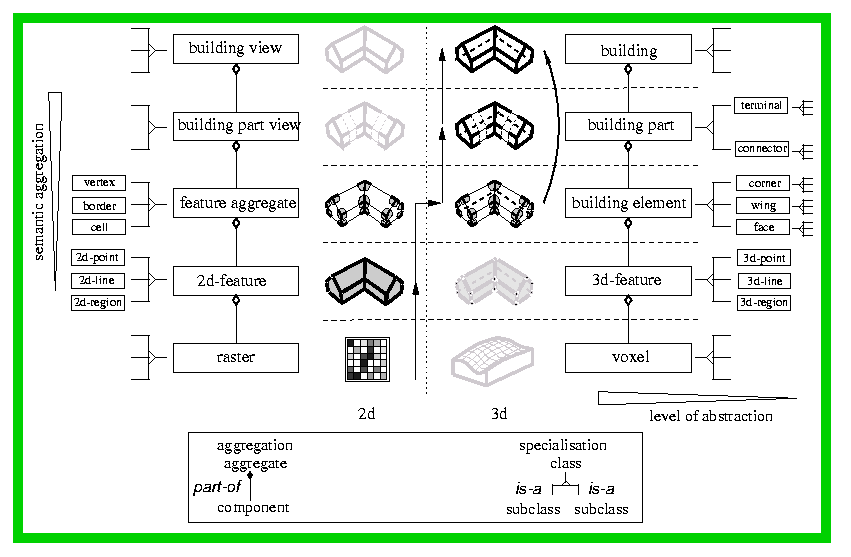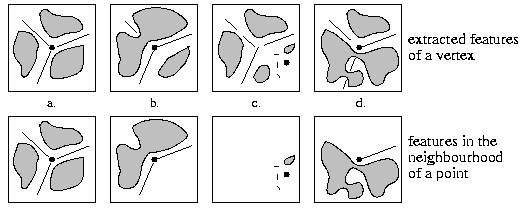
We therefore propose a multi-level part-of hierarchy. It reflects different levels of the envisaged semantic abstraction. The primitives of each aggregation level are specialized by an is-a hierarchy into subclasses.
Each primitive is described by its semantics, its geometry and possibly its physical properties. Its class membership and its relations to other primitives formally describes its semantics. The geometry is described by pose and form parameters.
We at the moment employ four semantic levels for modeling complex buildings, which seems to be sufficient for a large class of buildings.

Fig 1: The different semantic levels of the part-of hierarchy are shown in vertical direction, the different levels of abstraction of the is-a hierarchy in horizontal direction, which is only shown for the 3D-model. The 2D-image model describes the expected appearance of the building in the different levels of the part-of hierarchy, which is indicated by not showing the hidden lines

Fig 2: shows the corner representation. A corner is composed from object parts of the level features, namely points, lines and regions. On the left side the graph representation is shown.
Therefore the object model is transferred to the image model for the levels, which are relevant for image analysis. The specialization hierarchy can not be transferred to coherent components in image space as it mainly depends on geometric properties of the components.

The figure shows different vertex appearences depending on the observability of the corner.
